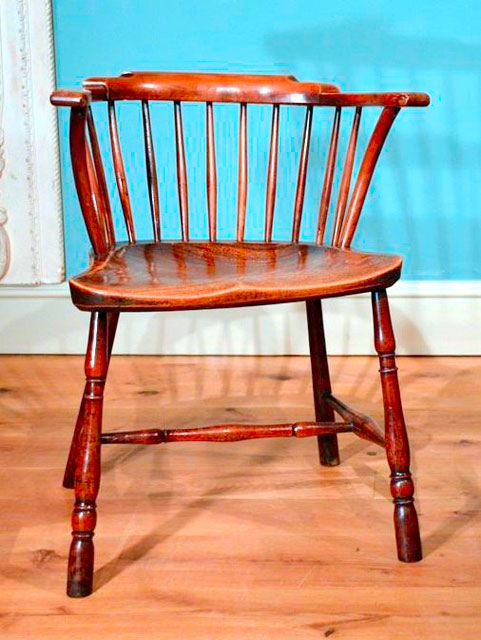El Barto":2ctzlyut said:
To be honest I don't know how green the timber was.
For the seat and "straight" spindle components there are pros and cons in using kilned versus "wet" timber. Plenty of windsors have warped as the seat dries out, although shaping and saddling a wet seat is an awful lot easier than working with kilned boards. In these antique windsors the warping has added to the charm, but there are examples where the distortion is far more extreme, and in any case the chair will rock atrociously until the warping settles down and the legs can be re-levelled.
But when it comes to steam bent components there's no longer any "on the one hand" type debate. Kilned timber is massively inferior for steam bending. I've steam bent components that were freshly felled, air dried, and kilned. In my experience you might get a 90% success rate with freshly felled and 80% with air dried, but with kilned timber the success rate plummets to 30 or 40% at best. In other words freshly felled and air dried aren't all that different from a practical perspective, but kilning permanently changes the timber at a cellular level and renders it almost impossible to
reliably steam bend beyond the very shallowest curves.
That's why I previously said that although windsor chair making is a superb route into woodworker for the hobbyist (in that the skills and technique are surprisingly easy to acquire, so you can produce "real" furniture within a few months or even weeks), the biggest obstacle for the newcomer is likely to be sourcing appropriate timber. Air dried or freshly felled billets simply aren't available from the vast majority of timber yards. Added to which, the Elm, Yew, and European fruitwoods that you'd want for the very best windsors aren't mainstream commercial timbers, so are also difficult to find. Given that buying hardwood timber seems to be the number one problem for many hobbyists the adding difficulty of buying windsor hardwoods would be an insurmountable obstacle for most newbies.
It's a pity because otherwise windsor chair making has a huge amount to offer.





































